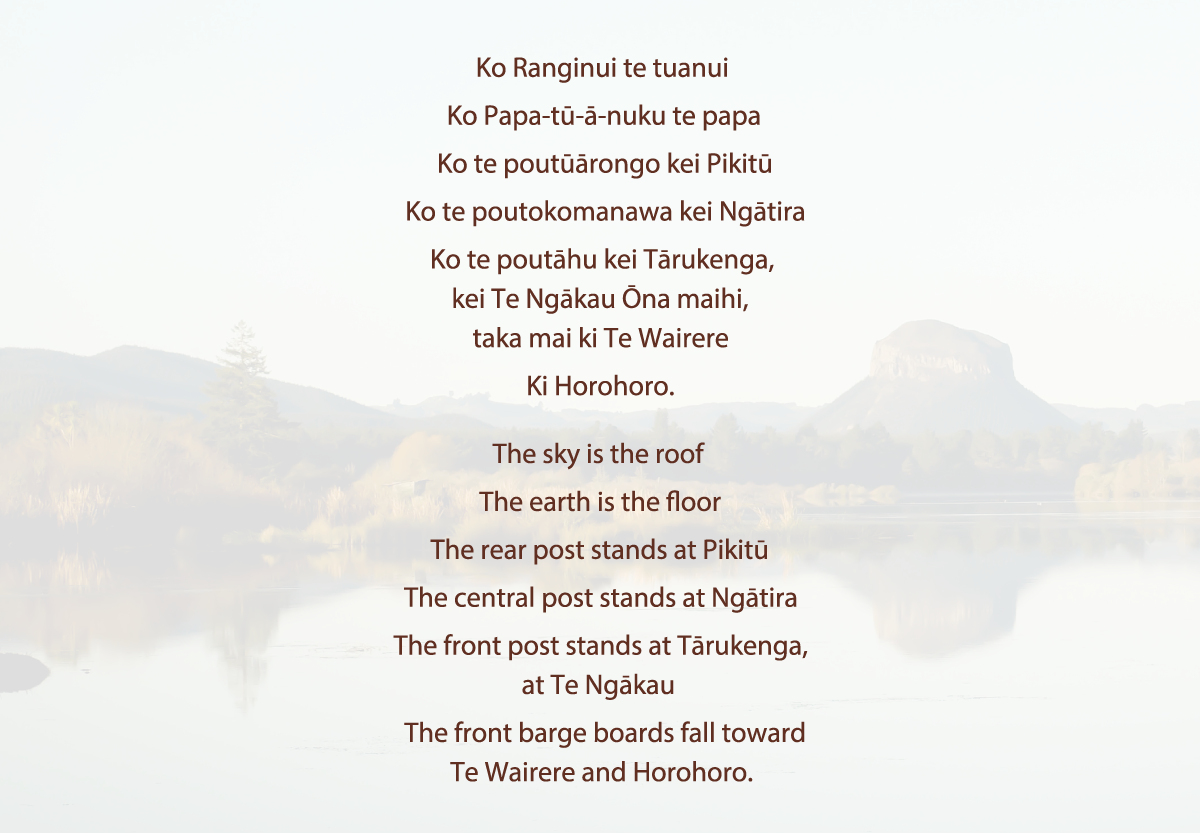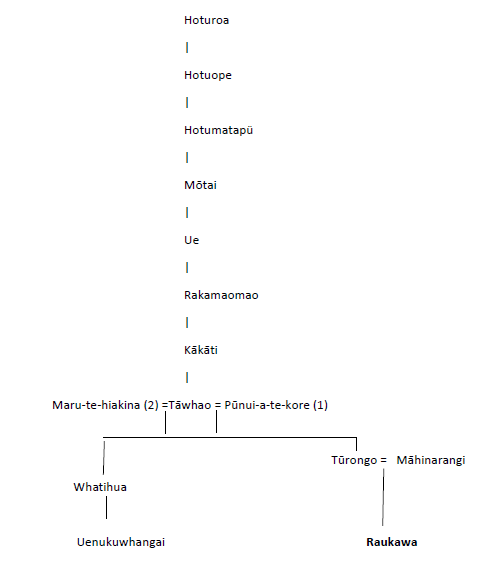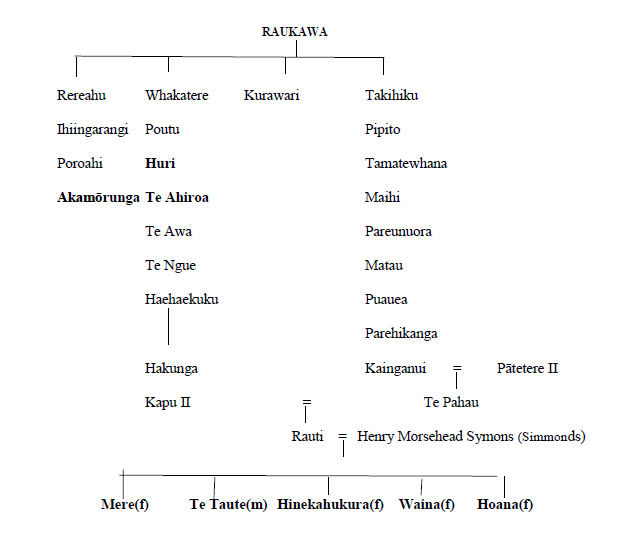Waipapa ki Arapuni Waahi Ahurei

Early Tainui traditions
According to genealogical reckoning, the Tainui waka arrived at Kāwhia about 1300 AD led by Hoturoa. Kāwhia remained the nucleus of Tainui settlement for several generations, and by the time of Kākāti the tupuna was born (c1400) “occupation of the country [by Tainui] had extended to Whaingaroa in the north and to Moeatoa in the south, but so far no determined effort had been made to penetrate into the interior.” While little else is known about the first seven or eight generations of settlers, we know more detailed information about Tainui’s history from the ancestor Tāwhao (c. 1475) when the oral traditions became more regular through the generations.
Tāwhao married two sisters, Pūnui-a-te-kore the elder, and Maru-tē-hiakina her younger sibling, by whom he had two sons, Tūrongo and Whatihua. Although Tūrongo was born of the elder sister Whatihua was first-born and these circumstances gave rise to intense rivalry between the half-brothers over who was the tuakana. After being outwitted by Whatihua at an attempt to win the hand of Ruapūtahanga from Taranaki, Tūrongo left the Kāwhia area and journeyed to the Hawkes Bay district where he eventually met Māhinaarangi. He returned home to Rangiātea in the lower Waikato basin to prepare for his beloved who was heavily pregnant with his child. She gave birth to their son on the western side of the Kaimai Range and named him Raukawa after the scented Raukawa leaf that she used to attract Tūrongo. It is from Raukawa that the Ngāti Huri hapū descends from.
Pikitū Marae was built to support the descendants of Raukawa. Those who have remained as current ahikaaroa are principally from the following ancestral line – Mere Barnett (nee Symons); Henry Hare Symons/Simmonds (aka Hare Teimana/Te Taute); Hinekahukura Ngaroma (nee Symons); Waina Erueti/Aoake (nee Symons); Hoana Hakopa/Jacob (nee Symons). The four sisters and brother are children of Rauti and Henry Morsehead Symons of Cornwall England.
Te Whare Wairua o Raukawa
Pikitū Marae is known to be part of the Spiritual House of Raukawa – Te Whare Wairua o Raukawa. This metaphysical house sits across the tribal area of Raukawa and links together a large number of Raukawa marae. The physical features of a traditional whare tupuna is depicted in a ‘human form’ and Te Whare Wairua is connected via te tāhuhu (backbone or ancestral line). Te whatitoka (door of the whare) stands to the east near Rotorua at Tārukenga Marae. Te poutokomanawa (central pole) of the whare stands at Ngātira Marae. Te poutungaroa (back of the house) is located at Pikitū Marae, extending across the Waikato River to the mountain named Wharepūhunga. The maihi or arms of this spiritual house stretch from Tārukenga northwards to Te Wairere waterfall, along the Kaimai-Mamaku Range and southwards to the Horohoro Bluffs (traditionally known as Horohoroinga o ngā ringa a Kahumatamomoe). From this east-to-west lying tāhuhu or ridge pole spreads ngā heke (ribs) of the whare to the other marae of Te Kaokaoroa o Patetere. This kōrero appears to have developed in the nineteenth century with the influence of Tāwhiao, as a way to help bind the associated communities together to resist land sales and other destructive forces of colonialism.


